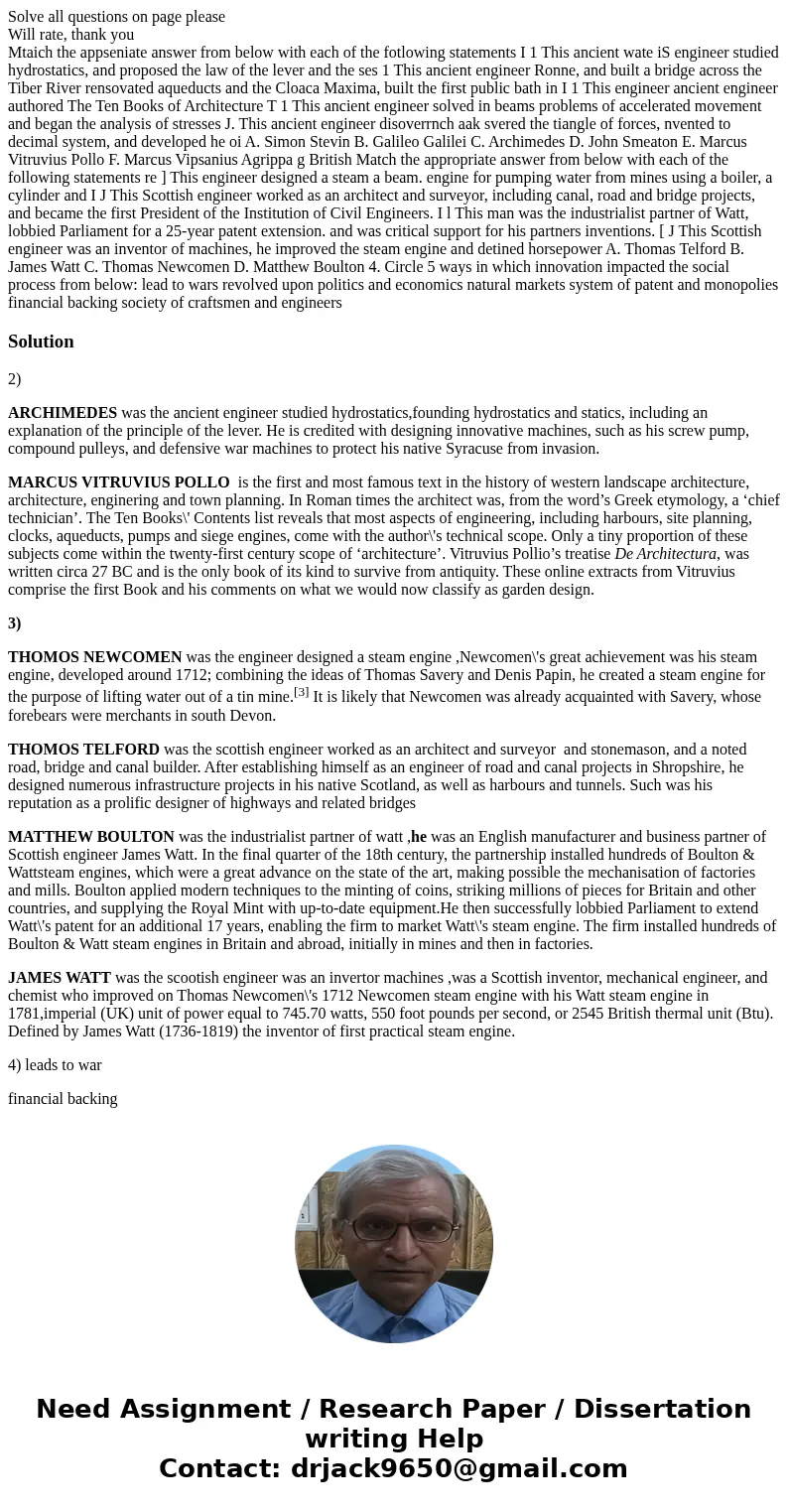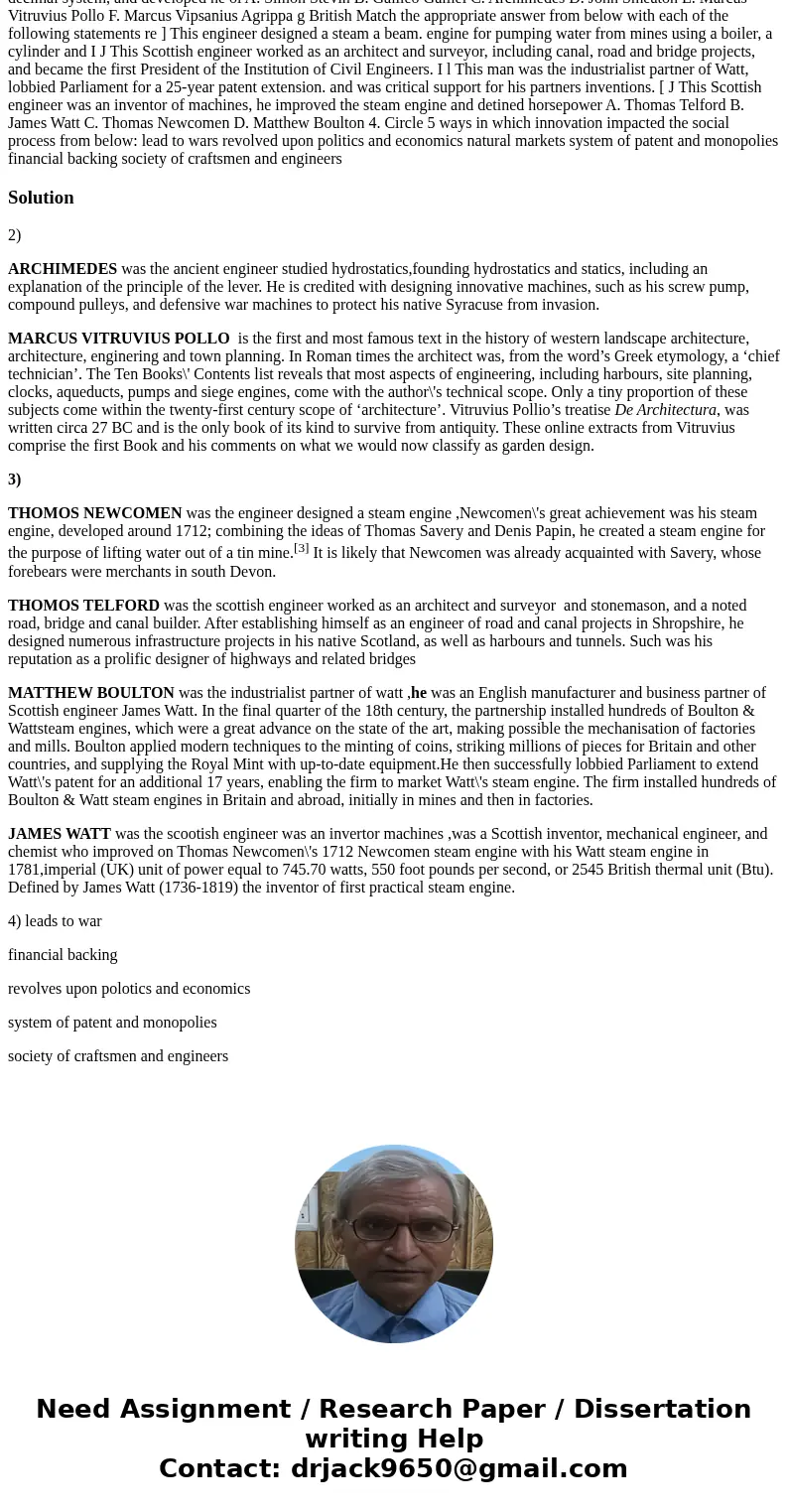Solve all questions on page please Will rate thank you Mtaic
Solution
2)
ARCHIMEDES was the ancient engineer studied hydrostatics,founding hydrostatics and statics, including an explanation of the principle of the lever. He is credited with designing innovative machines, such as his screw pump, compound pulleys, and defensive war machines to protect his native Syracuse from invasion.
MARCUS VITRUVIUS POLLO is the first and most famous text in the history of western landscape architecture, architecture, enginering and town planning. In Roman times the architect was, from the word’s Greek etymology, a ‘chief technician’. The Ten Books\' Contents list reveals that most aspects of engineering, including harbours, site planning, clocks, aqueducts, pumps and siege engines, come with the author\'s technical scope. Only a tiny proportion of these subjects come within the twenty-first century scope of ‘architecture’. Vitruvius Pollio’s treatise De Architectura, was written circa 27 BC and is the only book of its kind to survive from antiquity. These online extracts from Vitruvius comprise the first Book and his comments on what we would now classify as garden design.
3)
THOMOS NEWCOMEN was the engineer designed a steam engine ,Newcomen\'s great achievement was his steam engine, developed around 1712; combining the ideas of Thomas Savery and Denis Papin, he created a steam engine for the purpose of lifting water out of a tin mine.[3] It is likely that Newcomen was already acquainted with Savery, whose forebears were merchants in south Devon.
THOMOS TELFORD was the scottish engineer worked as an architect and surveyor and stonemason, and a noted road, bridge and canal builder. After establishing himself as an engineer of road and canal projects in Shropshire, he designed numerous infrastructure projects in his native Scotland, as well as harbours and tunnels. Such was his reputation as a prolific designer of highways and related bridges
MATTHEW BOULTON was the industrialist partner of watt ,he was an English manufacturer and business partner of Scottish engineer James Watt. In the final quarter of the 18th century, the partnership installed hundreds of Boulton & Wattsteam engines, which were a great advance on the state of the art, making possible the mechanisation of factories and mills. Boulton applied modern techniques to the minting of coins, striking millions of pieces for Britain and other countries, and supplying the Royal Mint with up-to-date equipment.He then successfully lobbied Parliament to extend Watt\'s patent for an additional 17 years, enabling the firm to market Watt\'s steam engine. The firm installed hundreds of Boulton & Watt steam engines in Britain and abroad, initially in mines and then in factories.
JAMES WATT was the scootish engineer was an invertor machines ,was a Scottish inventor, mechanical engineer, and chemist who improved on Thomas Newcomen\'s 1712 Newcomen steam engine with his Watt steam engine in 1781,imperial (UK) unit of power equal to 745.70 watts, 550 foot pounds per second, or 2545 British thermal unit (Btu). Defined by James Watt (1736-1819) the inventor of first practical steam engine.
4) leads to war
financial backing
revolves upon polotics and economics
system of patent and monopolies
society of craftsmen and engineers


 Homework Sourse
Homework Sourse